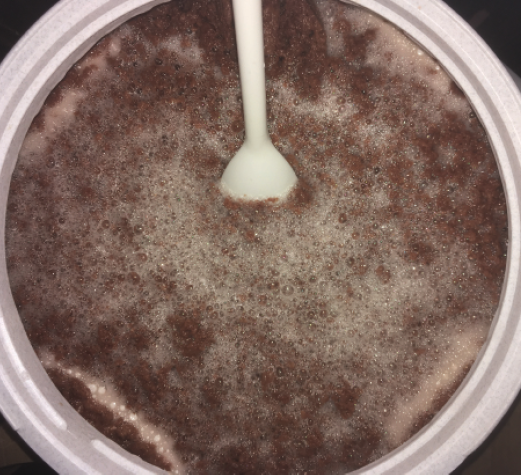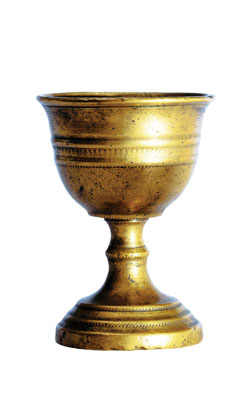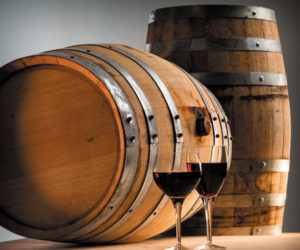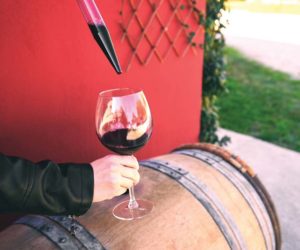Q
How often do you measure Brix during fermentation when making wine? Is there a starting point or standard schedule to measure or does this come with experience?
Melissa Ragole
Riverside, California
A
Like most everything in winemaking, the glib answer is, “It depends.” The real answer, however, is much more complex and as you intimate, experience can play a large part in fine-tuning your sugar-measuring schedule during fermentation.
During the alcoholic fermentation process, yeast cells convert the sugar in grapes (or other fruit) into ethyl alcohol and carbon dioxide. Typical starting degrees Brix would be around 25 for a typical red wine (or 1.106 specific gravity). Interestingly, the fermentation is considered complete on the Brix scale only when the fermentation drops to -1.0; this is because alcohol is less dense than water and will cause the negative reading when all the sugar is gone. Specific gravity (SG) is a little more intuitive as “dry” is considered anything below 0.995.
During fermentation, winemakers measure the density of the fermenting juice in order to get an idea as to how quickly the sugar is disappearing and how much sugar remains. I would argue that the rapidity with which the sugar is consumed (and the density is lowered) is almost as important as the level of sugar itself; the speed of a fermentation can give a winemaker important insight into how it is unfolding. Usually a 1–3 °Brix drop per day for whites and no more than 4 °Brix drop per day for reds is what I like to see. What happens when a fermentation goes from 25 to 10 °Brix too quickly? It means that the fermentation is probably hotter than it should be (fermentation gives off heat), which might cause the yeast cells to become stressed. Stressed yeast cells have a harder time completing a fermentation and can cause off-odors like ethyl acetate and fusel oils, which at certain concentrations become undesirable. Also, as alcohol levels increase, the yeast cell walls become increasingly permeable and sensitive to alcohol itself. A high fermentation temperature exacerbates this and can contribute to a stuck or sluggish fermentation.
However, let’s return to your original question. In my cellar experience, I would say that the most basic “standard” sampling schedule is twice a day — once in the morning and again 12 hours later. I recommend measuring sugar more often if you believe you will have a rapid fermentation. Conversely, measuring once a day is acceptable if you are in the first 24–36 hours of the fermentation; this is the “lag phase” when sugar isn’t measurably being consumed but the yeast cells are rapidly multiplying and getting ready to start performing. Measuring once a day is also acceptable if your fermentation is in its last 1–2 degrees Brix or approaching 0.995 SG, unless you suspect a sluggish fermentation. Then I would measure more often in order to get a handle on how quickly things may be coming to a halt. At that point I would start deploying anti-stuck fermentation tactics like adding yeast hulls and making sure the temperature stays between 75–80 °F (24–27 °C). Yeast sometimes need a little warmth to complete a fermentation while on the opposite end of the spectrum, excessive heat at the end of fermentation can exacerbate alcohol permeability and hasten cell death.
As you can see, you can follow the natural curve of the fermentation and match your measurements to how quickly your fermentation is progressing. This is where the experience comes in. If you know your Zinfandel is a runaway fermenter (and many are), you may want to measure more often during the lag phase to know right when the yeast cells start to “take off.” Then you’ll have an idea of when you might want to put extra temperature control to tame those wild horses. When in doubt, measure Brix twice a day and at the height of fermentation, if you can, do three. That way you’ll always have a handle on where your fermentation might or might not go.
Q
What is your opinion in having wine in a brass goblet instead of glass/crystal. Would it taste different? Would it be better or inferior in a metal goblet?
Saurabh Kaushik
Calgary, Alberta
A
There certainly is something historically appealing about hoisting an overflowing chalice of one’s own homemade vinous deliciousness. In ancient times metal was a common material from which to fashion drinking cups. From medieval castles to Viking mead-halls, brass, pewter, and silver goblets have been part of our world’s imbibing culture. However, such romantic imaginings are best left to be just that as drinking wine out of a metal vessel, especially brass, will most likely change your wine and likely for the worse.
In my personal experience, any time I’ve had wine out of a metal cup it has made the wine taste metallic. When I was a college student I used to participate in Renaissance fairs and historical re-enactment events where we drank everything from water to beer to wine from clay, wood, and yes, metal vessels. In those historical epochs, after all, glass or crystal was a luxury only the very wealthy could afford. And afford it they did, for good reason. Drinking just about anything out of metal (except perhaps stainless steel) will likely make it taste metallic.
Don’t just take my anecdotal experience into account. Chemistry tells us that brass is an alloy of copper and zinc. Wine is also an excellent solvent, being a mixture of mostly water, alcohol, and acid in addition to smaller percentages of things like aroma and phenolic compounds. All three of those first components, upon coming in contact with the brass, will start to react with the metal itself. After all, copper is often used to treat wines that have a sulfide defect and before we could add copper sulfate in liquid form, winemakers in France would pass the wine through brass pipes to create the same effect.
So if your wine is suffering from a sulfide defect (smells like rotten eggs) it’s possible that drinking from a brass cup could make the wine smell better. If your wine is normal, the copper in the brass will not help your wine and might negatively affect quality because you might be extracting unnecessary metals and ions into your wine. When winemakers use copper to treat wine with sulfide issues they always use the minimum amount needed because 1) excess copper is toxic and 2) it can wreck the mouthfeel and shut down good aromatic elements.
Long story short? Metal cups can be fun, especially if you’re dressing up as a Game of Thrones character for Halloween. For quality drinking and proper wine tasting, however, a neutral vessel of glass or crystal is almost always best.
Q
I bought a Syrah kit that comes with EC-1118 yeast, but I am thinking about using a blend of D80 and D254 instead as they seem to be more suited for Syrah than EC-1118. I’m looking for some professional thoughts. I am also planning on using a WineStix oak alternative, probably for three months, during aging instead of the oak chips during fermentation. This wine will be blended with a Zinfandel that is now aging nicely.
Mike Bailey
Cheyenne, Wyoming
A
Good for you for thinking “outside the box” and going with a different yeast choice. I love both D80 and D254 for Syrah. D80 was isolated by the ICV in 1992 from the Côte Rôtie region of the Rhône Valley in France and is characterized, in my experience, by its big mouthfeel and licorice and spice flavors. It’s great for achieving that “minerality” character that I sometimes love in Rhône-style Syrahs. The only issue with D80 is that it tends to be a bit of a nutrient hog so make sure you are adding some kind of complex yeast nutrient to your fermentation to ensure there are enough micronutrients for this guy. It also has a fair alcohol tolerance, up to 16%.
D254 was also isolated in the Rhône Valley from a Syrah fermentation and has good alcohol tolerance — up to 16% as long as you give it appropriate air during the first half of fermentation. This yeast strain tends to yield more fruit-forward wines than D80 and so doing one lot with each and blending them together after fermentation is a really great idea for increasing complexity.
One thing I wouldn’t do, however, is blend the D80 and D254 yeast together in one fermentation. Believe it or not, yeast cells actually communicate to each other via chemical signals and they can be very competitive for resources (sugar, nutrients, oxygen, etc.). This means, that in microbial terms at least, they can get into little turf wars and the results can be ugly (think volatile acidity, acetaldehyde, and other off aromas and defects). Blending yeast cells is usually not a good idea because their competitive nature means that they just might not play nicely together. Myself, I just wouldn’t want to risk it. Is there any way that you can split up your Syrah into two smaller lots and ferment them each with one yeast strain and then blend those two lots post-fermentation? That sounds a lot safer to me.
As to using WineStix (sticks of oak in your wine after the fermentation is over), that’s great. If you don’t have access to barrels for your red wines, adding in oak pieces is a great way to go. There are many products on the market and it behooves any winemaker to experiment until they find what works for them and for their wines.
While I like your approach to adding oak alternatives during the aging period, don’t discount the positives that oak in the fermenter can bring, however. Fermenting on oak chips, dust, or even pure enological tannins can do a great many good things for red wines including improving the polymerization of tannins, helping to fix color, scavenge excess oxygen, and build structure early on. I personally ferment on about 1–2 g/L of untoasted oak dust or chips for most all of my red wines. The fermentation oak does not replace the oak that you need for aging later; it simply helps you build a better red wine foundation for further aging and development.







